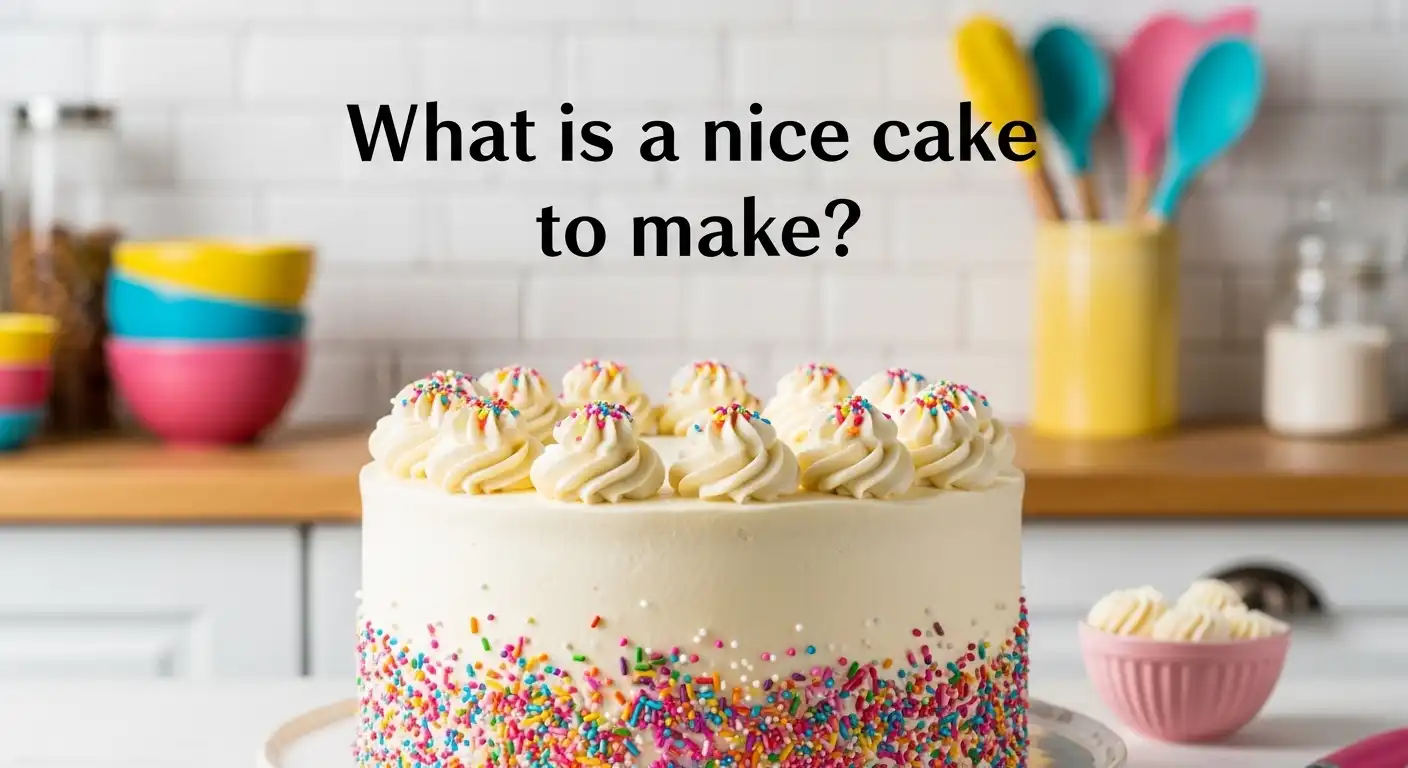What’s a Nice Cake to Make? Finding Your Perfect Bake
Ah, the simple question with a wonderfully complex answer: “What is a nice cake to make?” It sounds straightforward, but the truth is, the “nicest” cake isn’t a single recipe. It’s the cake that perfectly fits the occasion, your skill level, the time you have, and most importantly, who you’re making it for (even if that’s just you!).
Instead of just giving you a list, let’s explore how to figure out what the nicest cake is for you right now.
What Makes a Cake “Nice”?
“Nice” can mean many things:
- Simple and Easy: A cake that requires minimal effort and guarantees success.
- Comforting and Familiar: A classic recipe that brings back good memories.
- Impressive and Beautiful: A showstopper that wows guests.
- Delicious and Flavorful: A cake that just tastes amazing, regardless of complexity.
- Perfect for the Occasion: A cake that fits a specific celebration or mood.
Factors to Consider When Choosing Your “Nice” Cake
To find your ideal bake, ask yourself a few questions:
What’s the Occasion?
- Just Because: A simple loaf cake, mug cake, or quick sheet cake is perfect.
- Birthday/Celebration: A layered cake (vanilla, chocolate, or red velvet), a fancy Bundt cake, or a cheesecake (often used like cake) feels special.
- Holiday/Gathering: Something seasonal like an apple cake in fall, a fruitcakearound the holidays, or a refreshing lemon cake in spring/summer.
- Bringing to Someone: A sturdy loaf cake or a simple frosted sheet cake travels well.
What’s Your Skill Level (and Energy Level)?
- Beginner/Low Energy: Look for one-bowl recipes, loaf cakes, sheet cakes, simple muffins/cupcakes, or mug cakes. Box mixes are also perfectly “nice” for a quick treat!
- Intermediate: Layer cakes, Bundt cakes, cheesecakes, and recipes involving simple fillings or frostings are good fits.
- Advanced/Up for a Challenge: Croquembouche (okay, maybe that’s extreme!), intricate tiered cakes, delicate génoise sponges, or recipes with complex glazes and decorations.
How Much Time Do You Have?
- Minutes: Mug cake.
- Under an Hour (Baking + Cooling Minimal): Quick loaf cake, some muffin recipes, simple sheet cake.
- A Few Hours (Includes Cooling/Simple Frosting): Most standard layer cakes, Bundt cakes, and loaf cakes.
- Half a Day or More (Includes Chilling/Decorating): Cheesecakes, complex layer cakes, and cakes requiring intricate decoration.
What Ingredients Do You Have?
- Sometimes the “nicest” cake is the one you can make without a trip to the store. Look through your pantry and fridge for inspiration. Flour, sugar, eggs, butter/oil, cocoa powder, and vanilla are common starting points.
Who Is It For? (Taste Preferences & Dietary Needs)
- Kids often love simple vanilla or chocolate with sprinkles.
- Some prefer fruity cakes (lemon, berry).
- Others love spice cakes, coffee cakes, or rich chocolate cakes.
- Are there allergies (nuts, dairy, gluten) or dietary restrictions (vegan)? Baking for these needs is incredibly “nice” and shows you care.
Popular “Nice” Cake Ideas (Categorized)
Still need inspiration? Here are a few types of cakes that often fit the bill:
- The Ultimate Comfort Cake: Classic Pound Cake or a simple Vanilla or Chocolate Sheet Cake with buttercream. Reliable, crowd-pleasing, and relatively easy.
- The Impressive (Yet Manageable) Cake: A beautifully glazed Bundt cake (like lemon or chocolate), a classic apple upside-down cake, or a rustic fruit galette (cake-like).
- The quick-fix cake: banana bread (a type of cake!), lemon drizzle loaf, or a simple mug cake.
- The Celebration Standard: Vanilla Layer Cake with Vanilla Buttercream, Rich Chocolate Layer Cake, or Red Velvet Cake.
- The Bright and Fresh Cake: Lemon Cake (loaf or layer), Strawberry Shortcake (using cake!), or a cake studded with seasonal berries.
Tips for Making Any Cake Nice:
- Read the recipe thoroughly before you start.
- Measure accurately, especially dry ingredients.
- Don’t overmix your batter once flour is added.
- Don’t overbake—check for doneness using a skewer or toothpick.
- Allow cakes to cool properly before frosting or slicing.
- Don’t stress! Even if it’s not perfect, homemade cake is usually received with joy.
Conclusion
So, what is a nice cake to make? It’s not a specific recipe written in stone. It’s the cake that you are excited to create, that fits the moment, and that brings a smile to someone’s face (including your own!). Whether it’s a simple loaf cake for your morning coffee or a towering layer cake for a milestone birthday, the “nicest” cake is the one you choose to bake with a little bit of care and intention.
Happy Baking!
